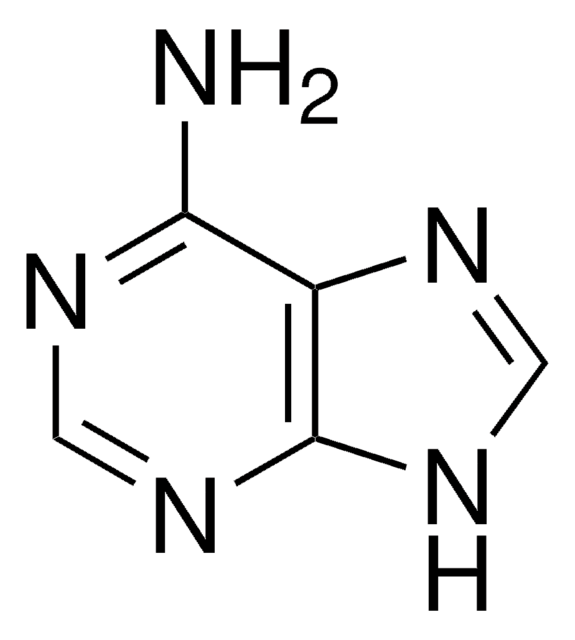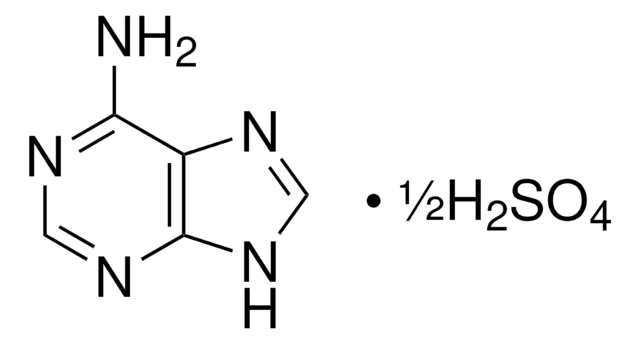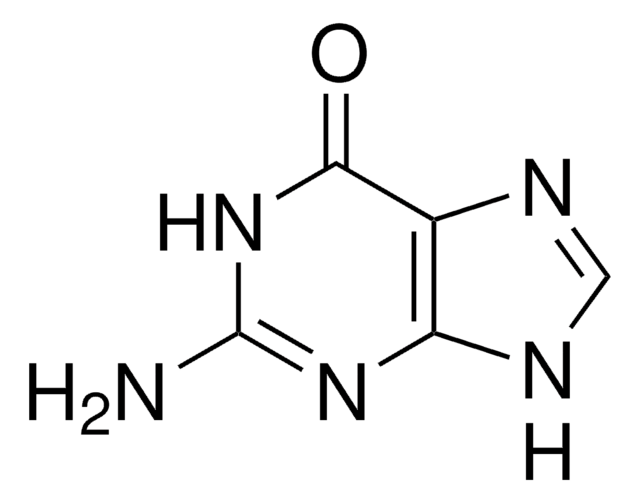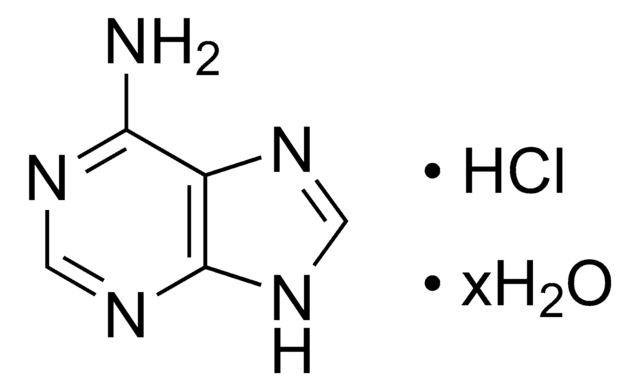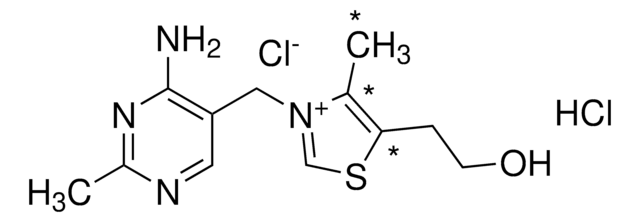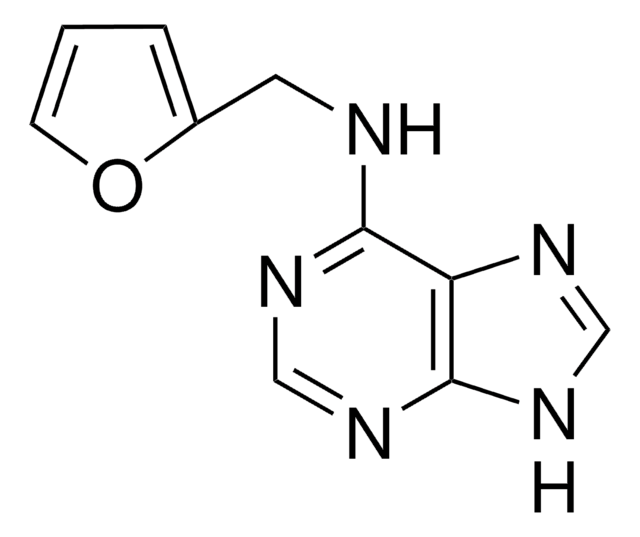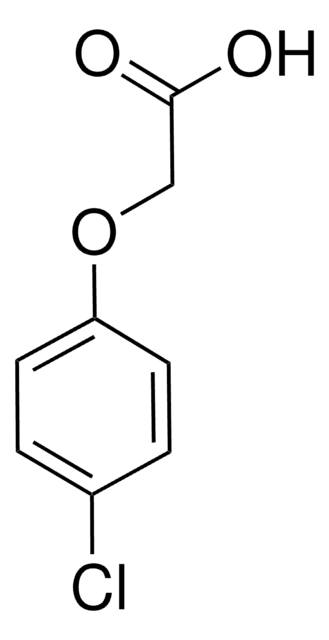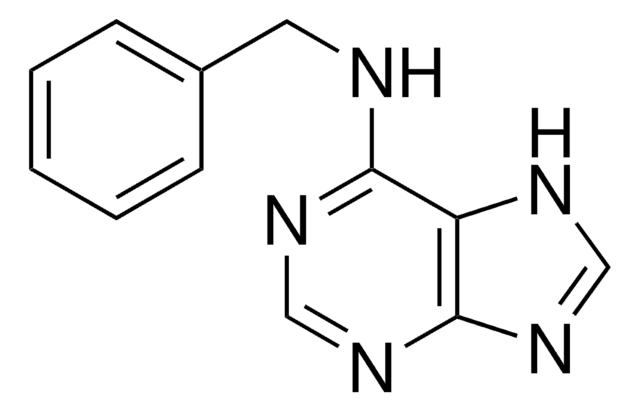A5665
Adenin
BioReagent, suitable for plant cell culture, ≥99%
Synonym(e):
6-Amino-purin, Vitamin B4
About This Item
Empfohlene Produkte
Produktlinie
BioReagent
Qualitätsniveau
Assay
≥99%
Form
powder
Mol-Gew.
Mw 135.13 g/mol
Methode(n)
cell culture | plant: suitable
Farbe
white to off-white
mp (Schmelzpunkt)
>360 °C (lit.)
Löslichkeit
0.5 M HCl: soluble 20 mg/mL, clear to slightly hazy, colorless to faintly yellow
Anwendung(en)
agriculture
SMILES String
Nc1ncnc2[nH]cnc12
InChI
1S/C5H5N5/c6-4-3-5(9-1-7-3)10-2-8-4/h1-2H,(H3,6,7,8,9,10)
InChIKey
GFFGJBXGBJISGV-UHFFFAOYSA-N
Angaben zum Gen
human ... AKT1(207) , GSK3B(2932) , LCK(3932) , MAP3K1(4214) , MAPK14(1432) , MAPK8(5599) , MAPK9(5601) , MAPKAPK2(9261) , PRKACA(5566) , PRKCA(5578) , RAF1(5894) , ROCK2(9475)
mouse ... Mapk1(26413)
rat ... Camk2a(25400) , Mapk10(25272)
Suchen Sie nach ähnlichen Produkten? Aufrufen Leitfaden zum Produktvergleich
Verwandte Kategorien
Allgemeine Beschreibung
Anwendung
Signalwort
Danger
H-Sätze
P-Sätze
Gefahreneinstufungen
Acute Tox. 3 Oral
Lagerklassenschlüssel
6.1D - Non-combustible, acute toxic Cat.3 / toxic hazardous materials or hazardous materials causing chronic effects
WGK
WGK 3
Flammpunkt (°F)
Not applicable
Flammpunkt (°C)
Not applicable
Persönliche Schutzausrüstung
dust mask type N95 (US), Eyeshields, Faceshields, Gloves
Analysenzertifikate (COA)
Suchen Sie nach Analysenzertifikate (COA), indem Sie die Lot-/Chargennummer des Produkts eingeben. Lot- und Chargennummern sind auf dem Produktetikett hinter den Wörtern ‘Lot’ oder ‘Batch’ (Lot oder Charge) zu finden.
Besitzen Sie dieses Produkt bereits?
In der Dokumentenbibliothek finden Sie die Dokumentation zu den Produkten, die Sie kürzlich erworben haben.
Kunden haben sich ebenfalls angesehen
Unser Team von Wissenschaftlern verfügt über Erfahrung in allen Forschungsbereichen einschließlich Life Science, Materialwissenschaften, chemischer Synthese, Chromatographie, Analytik und vielen mehr..
Setzen Sie sich mit dem technischen Dienst in Verbindung.